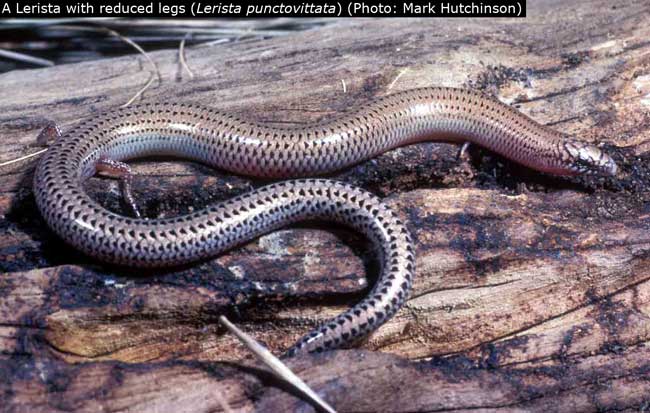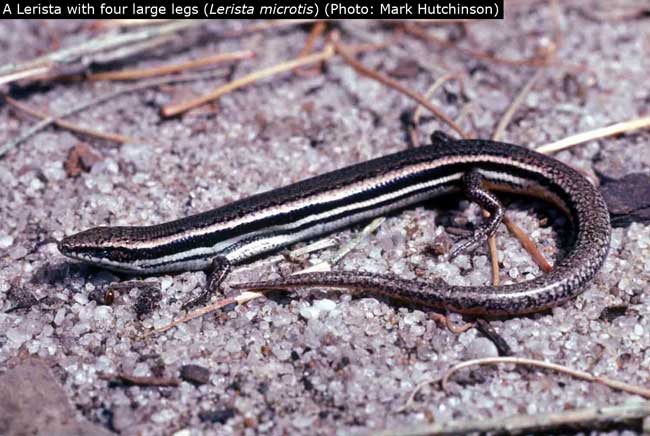A number of small Australian lizards called ball lizards have transformed from having 5-foot to footless legs (like most snakes) in just 3.6 million years. This is a transformation that takes place in the blink of an eye during the geological time.
If you consider a 1000-piece toilet paper to be the length of the geological history of the Earth, it is only on a small square piece of paper that the two-legged ancestor of Homo sapiens appeared, about 4.5 million years ago , according to geologist. Robert Giegengack in Pennsylvania.
 Lerista ball lizard has dissipated legs (Lerista punctovittata). (Photo: Mark Hutchinson)
Lerista ball lizard has dissipated legs (Lerista punctovittata). (Photo: Mark Hutchinson)
There are 75 fast-growing ball lizards called Lerista. These ball lizards crawled on Earth for 13.4 million years , to this day, some still have 5 fingers, some with 4 and some do not have or only tiny pieces of legs popping out. So the University of Adelaide scientists used genetic sequencing techniques to reach the new genealogy of the ball lizard. Genealogy will show when these lizards dissolve their fingers or dissolve their legs in their evolution as well as how quickly evolution is.
Researcher Adam Skinner of the University of Adelaide said: 'At the highest level is complete limb spending from the five-toe leg. The five-finger lizard species lives about 3.6 million years ago. ' He added that compared to the equivalent evolutionary changes in other animals, this phenomenon occurs in a flash.
 Lerista ball lizard has 4 big legs (Lerista microtis). (Photo: Mark Hutchinson)
Lerista ball lizard has 4 big legs (Lerista microtis). (Photo: Mark Hutchinson)
The analysis was published in detail in BMC Evolutionary Biology and funded by the Hermon Slade Foundation. Research suggests that the lifestyle of glossy lizards has led to rapid and spectacular changes in their body shape.
Skinner, who led the research, said: 'It is believed that lizards are more disseminated because they spend most of their time swimming through sand or gravel, not necessary for this work, but even for things. obstruct them '.

Lista ball lizard.(Photo: Mark Hutchinson)
Skinner and his colleagues found that the evolution of the solid body form in Lerista's ball lizards happened not only repetitively, but even without evidence of the inverse phenomenon (ie, finger or limb). will appear again.
Expenditure spent in evolution has occurred many times throughout life's history on Earth, in mammals, birds, amphibians, snakes and lizards. Lizards and snakes are typical cases to study this biological phenomenon. About 53 species of lizards and snakes have a loss of a limb or more in their evolution.
 Discovered an ancient centipede fossil 99 million years old
Discovered an ancient centipede fossil 99 million years old Discovered bat-like dinosaurs in China
Discovered bat-like dinosaurs in China Discovered a 200-year-old bronze cannon of the coast
Discovered a 200-year-old bronze cannon of the coast Discover 305 million-year-old spider fossils
Discover 305 million-year-old spider fossils